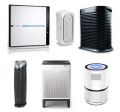Calcined Anthracite Market - Global Industry Analysis, Size, Share, Growth, Trends
Global Calcined Anthracite Market: Overview
Anthracite, also known as hard coal, is a naturally occurring material. It is rich in carbon content and represents the highest level of non-metamorphic coalification. Anthracite coal forms as a result of compression of geologically preserved organic residue of primordial swamps, under the Earth’s crust. Anthracite coal finds numerous applications in foundries as a carbon raiser, refractory coating component, filler in rubber production, and pigments. Calcination process involves heating anthracite coal to high temperatures, in the presence of air or oxygen. Anthracite calcination is usually performed by two ways, viz. electrical calcination and gas calcination. Calcined anthracite is produced using electrically fired calcining furnace. The process involves heat treatment of high grade anthracite.
Electrically calcined anthracite is heated to temperatures as high as 2000°C, which results in the development of graphitic structure in the finished product. Gas calcined anthracite is the calcination of anthracite in a gas-fired furnace. Electrically calcined anthracite as well as gas calcined anthracite have low ash, sulfur, and moisture. Calcined anthracite is utilized in a number of applications including, the production of carbon paste electrode, cathode blocks for the aluminum industry, production of prebake electrodes, soderberg & tamping pastes, and as a smelting additive. Gas calcined anthracite is used as a substitute for calcined petroleum coke and recarburizer in steel mills ladles, melting, holding, and blast furnaces. Anthracite mines are majorly found in Mexico, the U.S., Peru, South Africa, Ukraine, and Swaziland. Ukraine has large reserves of anthracite, with the mine capacity of around 15.5 million tons. Anthracite mines in Ukraine suffer from lack of investment and low efficiency. Low efficiency of these mines is likely to hamper the supply of anthracite, adversely impacting the overall production of calcined anthracite.
Request a Sample –
https://www.transparencymarketresearch.com/sample/sample.php?flag=S&rep_id=46845
Global Calcined Anthracite Market: Key Segments
In terms of product type, the global calcined anthracite market can be segmented into electrically calcined anthracite and gas calcined anthracite. Electrically calcined anthracite and gas calcined anthracite are obtained by heating of high grade anthracite. These contain low ash, sulfur, and moisture. Electrically calcined anthracite has high carbon content and better electrical & thermal conductivity than the gas calcined anthracite. Electrically calcined anthracite is extensively used in the aluminum industry as a smelting additive due to its high purity and consistency. Gas calcined anthracite possesses high carbon content and has high density. It is one of the best sources for high-quality carbon. Gas calcined anthracite, owing to high carbon content, is known to increase yield and reduce the overall cost. Gas calcined anthracite is majorly employed as a substitute to calcined petroleum coke and recarburizer in several applications.
Based on region, Asia Pacific is likely to dominate the global calcined anthracite market during the forecast period owing to the expansion of end-user industries in the region. China is a major producer of aluminum. Asia Pacific is the largest producer of aluminum. India and Australia are significant producers of aluminum in the region. Asia Pacific is a major producer of steel. It produced more than 60% of steel in 2016, with major contribution from countries such as China, India, and Japan. Asia Pacific is a highly lucrative region for end-use industries of calcined anthracite. The calcined anthracite market in Asia Pacific is expected to expand at a substantial pace during the forecast period.
Request for covid19 impact analysis –
https://www.transparencymarketresearch.com/sample/sample.php?flag=covid19&rep_id=46845
Global Calcined Anthracite Market: Key Players
Key players operating in the global calcined anthracite market include Well United Resources Limited, Sojitz JECT Corporation, Aluminium Rheinfelden GmbH, Asbury Carbons, Rheinbraun Brennstoff GmbH, and Ningxia Carbonvalley International Co. Ltd.
This study by TMR is all-encompassing framework of the dynamics of the market. It mainly comprises critical assessment of consumers' or customers' journeys, current and emerging avenues, and strategic framework to enable CXOs take effective decisions.
Our key underpinning is the 4-Quadrant Framework EIRS that offers detailed visualization of four elements:
- Customer Experience Maps
- Insights and Tools based on data-driven research
- Actionable Results to meet all the business priorities
- Strategic Frameworks to boost the growth journey
Pre-Book now-
https://www.transparencymarketresearch.com/checkout.php?rep_id=46845<ype=S
The study strives to evaluate the current and future growth prospects, untapped avenues, factors shaping their revenue potential, and demand and consumption patterns in the global market by breaking it into region-wise assessment.
The following regional segments are covered comprehensively:
- North America
- Asia Pacific
- Europe
- Latin America
- The Middle East and Africa
Companies in the Calcined Anthracite market have increasingly shifted gears with wide application of digital technology across the continuum, from raw material sourcing to manufacturing to generation of final output, to warehousing to final distribution operations. Among the various affects, the market is witnessing new growth economics due to thinning of line between specialty and commodity businesses that are associated with the larger ecosystem. At the same time, new growth parameters are being vigorously being debated as industry stakeholders put greater emphasis on the circular economy processes.
More Trending Report-









